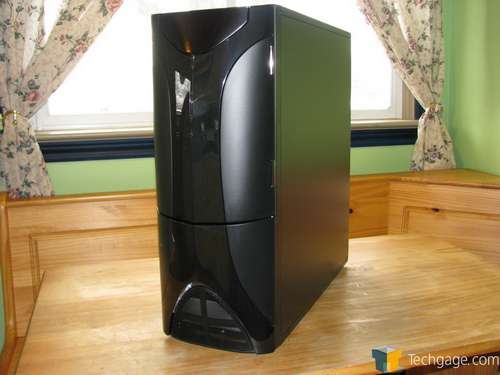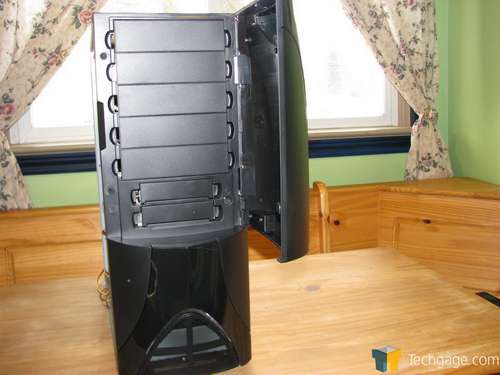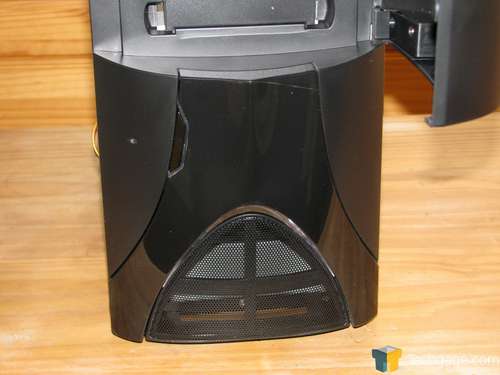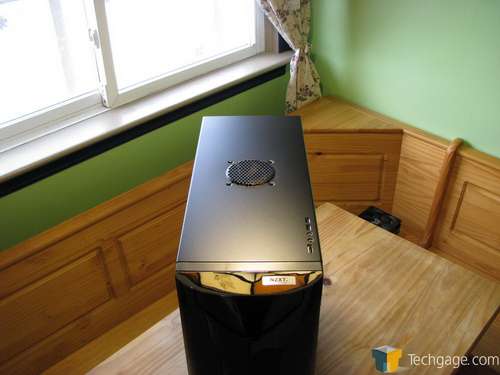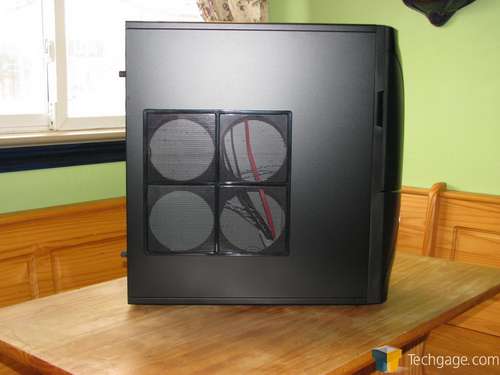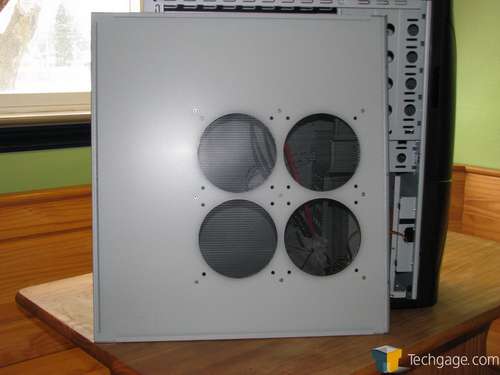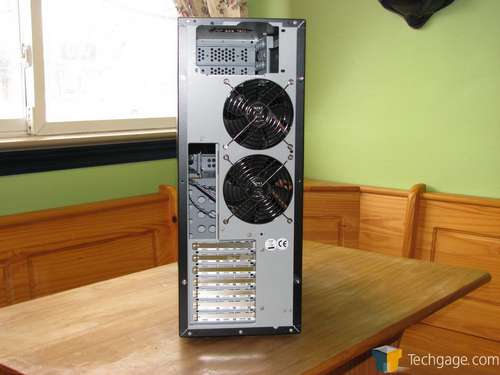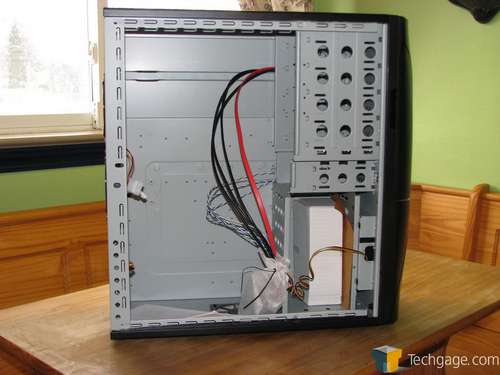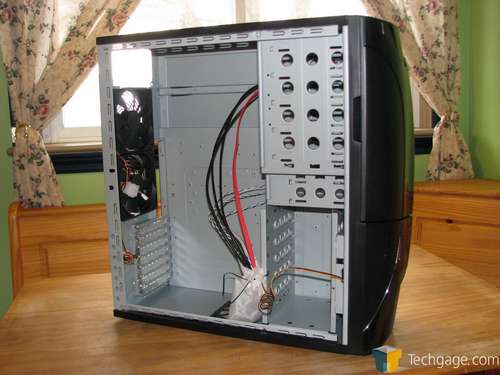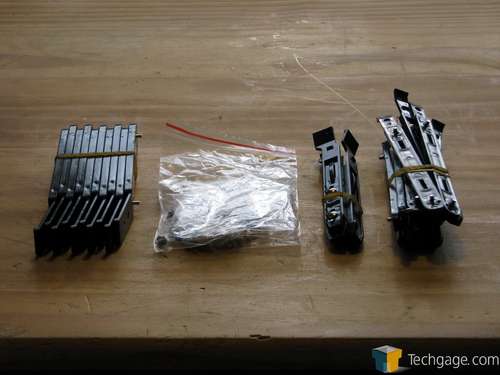- Qualcomm Launches Snapdragon 4 Gen 2 Mobile Platform
- AMD Launches Ryzen PRO 7000 Series Mobile & Desktop Platform
- Intel Launches Sleek Single-Slot Arc Pro A60 Workstation Graphics Card
- NVIDIA Announces Latest Ada Lovelace Additions: GeForce RTX 4060 Ti & RTX 4060
- Maxon Redshift With AMD Radeon GPU Rendering Support Now Available
NZXT Zero 2 Full-Tower
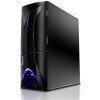
NZXT has impressed us time and time again with their unique chassis designs and attention to detail, so when we saw that they were offering a $100 full-tower with a fully customizable cooling system, we had to check it out. With a clean design and lots of available space, did NZXT create a a must-have for the value-conscious consumer?
Page 1 – Introduction
You just finished hours upon hours of research in your quest to build the ultimate PC. Picking one component that does not compliment the rest will surely lead to not only disappointment, it will also send you straight to gaming hell. It can be an overwhelming task as there are just too many factors to consider in making sure you got it just right.
The time has come to pick out the final resting place for all your parts. Picking the wrong case can be a disaster as it can cause headaches during your build or it will not be up to the task of keeping your parts cool. Do I go for the best airflow? Does that one have all the fans I need? Will I have to modify it in any fashion to make it work just right for my needs? The questions are just as endless as the selections available for purchase.
Thankfully, blending performance and style has never been easier. It seems that nearly every week we hear of the latest and greatest chassis design has been released. The airflow competition is just as fierce as the need to make you fall in love at first sight. The time has never been better to home-build your latest creation. Comfortable in all your choices you click that “submit order” tab and wait for your booty arrive.
NZXT has placed themselves squarely in the crosshairs of the modern builder. With many different styles to choose from and an array of products including power supplies, fan controllers and gaming mice, they have strived to create a product to fit your personal taste and style. Enthusiasts have tough demands and high expectations. Up on the block today is the Zero 2 gaming chassis. Another healthy meal of airflow has been put on my plate, so let’s see how it tastes.
Closer Look
Calling itself the “Ultimate cooling chassis” with the words “fully loaded”, the Zero 2 right away got my spider-senses tingling. I had visions of walls of fans and well thought out cable management systems. Priced at around $99US, it fits nicely in the range of entry level to mid-range. Once out of the box and unwrapped we have our first look at the goods.
With a nice black paintjob and full frontal molded panel, I would have to say my initial thoughts were that it was somewhat plain. The fit and finish was very good and I have no complaints there. The upper section which covers the 5 ¼ and 3 ½ ODD/FDD areas is held closed by a magnet and is as easy as pie to operate. There is a blue LED light as well and the HDD activity light is up here as well.
The lower section hides the front 120mm intake fan area with a nicely sculpted metal grate. The power button is also integrated here as well. Another blue LED light is added to compliment the top as well as surrounding the power button.
The top is unremarkable with the I/O panel cut into the top left of the chassis. Depending on your desk arrangement, they could be awkward to access but I have to say I like the way they installed the ports. You can see the raised grill area for the optional top mounted 80mm fan.
After they boldly stated that this chassis was “fully loaded”, I must say I was somewhat disappointed (but not surprised) that there were no fans included on the side panel. There is room for four 120mm fans and there is no doubt your cooling potential will only go straight through the roof with all four locations in use. The mesh panel covering this area is of high quality and hardly protrudes more than 3/8″ out of the side panel.
After unscrewing the thumbscrews, we take a look in the inside of the side panel. To install your fans you have to unscrew the mesh as the screws must come through the outside for fan attachment. The steel used is thick and there was no noticeable flex when removed.
The rear of the case reveals the dual 120mm exhaust fans. Again, nothing remarkable is to be seen here and I right away noticed the lack of pre-drilled holes with grommets for any sort of external water cooling setup. While this is more of an inconvenience than a real issue, I feel that with the proliferation of easy to install water cooling kits out there this could turn off potential buyers. Aside from that, your power supply will mount up top.
Now that we are in the guts of the Zero 2, the nearly tool-free installation design is our main focus. Also notice the heavy bracing and rolled edges. Attention to detail is obvious and I found no sharp spots to draw blood. The design is somewhat old school with spaces for 5 HDD’s, 5 ODD’s and 2 floppy drives. There is an included filter over the bottom optional 80mm fan opening. Unfortunately, you have to remove it to install your fan since it does not have holes for screws to pass through.
Looking at the exhaust fan placement I noticed that there is no possibility of internally mounting a dual 120mm water cooling radiator internally since they are placed too close to the power supply. I feel that adding another 1″ or so here would have allowed such an install. The rear PCI slot covers are also solid instead of vented and use screws to hold them in place.
You get the expected full complement of drive rails for installing your drives. They attach simply with no screw required and sliding them home is a snap. The ODD’s slide in from the front as well. A bag of motherboard standoffs completes the included hardware list.
Something that no picture can tell you is the fact that this is a very well build and strong case. While I expected it to be stiff since it is made out of steel, I cannot help myself from emphasizing this aspect. I even jokingly sat down on it and wiggled around and the structure did not give in the slightest. After my rest, it became time to stuff some hardware inside and put it to the test.
Support our efforts! With ad revenue at an all-time low for written websites, we're relying more than ever on reader support to help us continue putting so much effort into this type of content. You can support us by becoming a Patron, or by using our Amazon shopping affiliate links listed through our articles. Thanks for your support!




